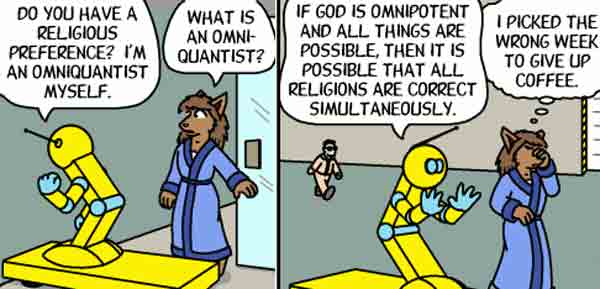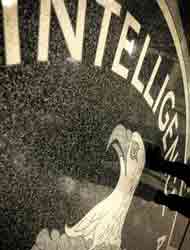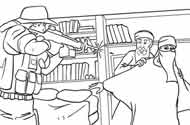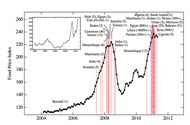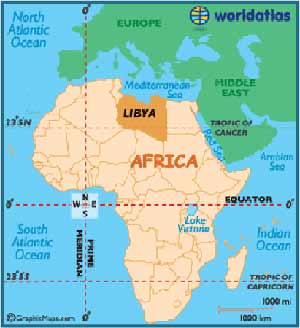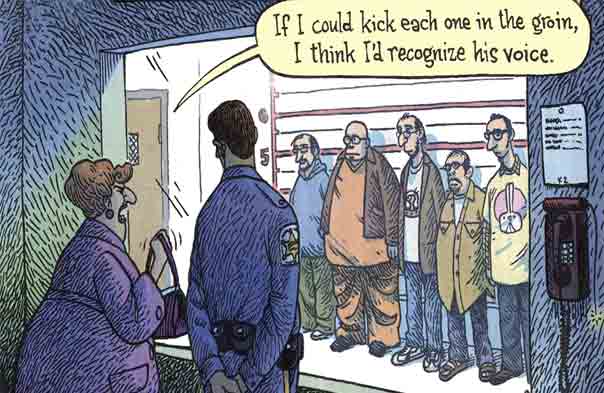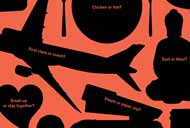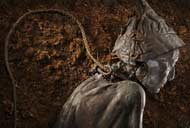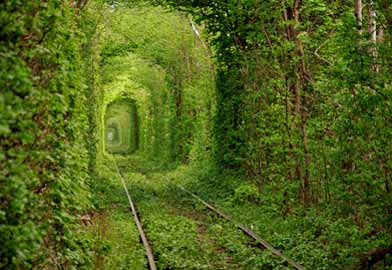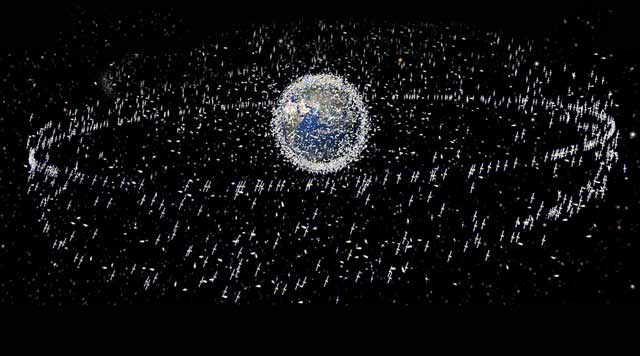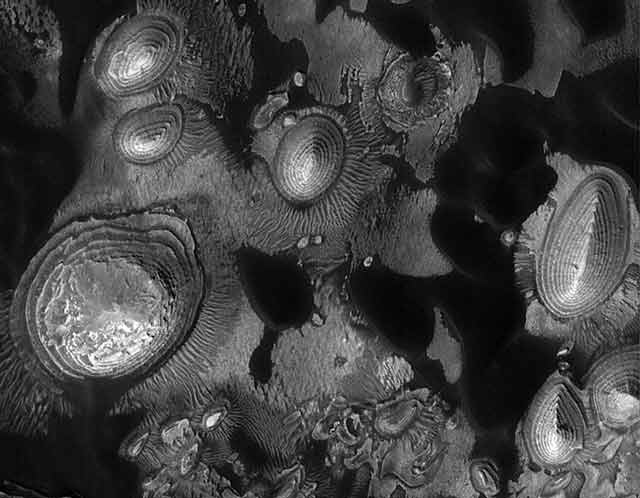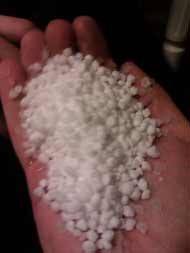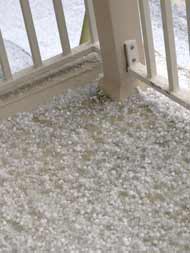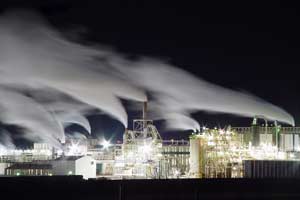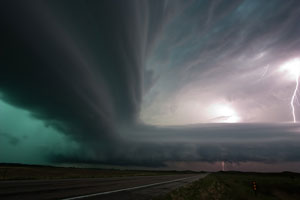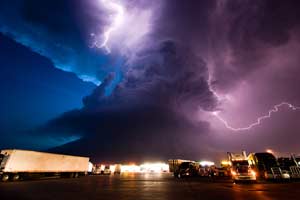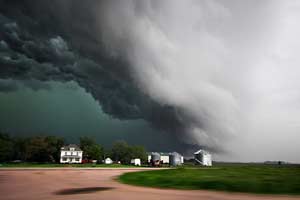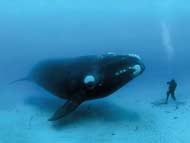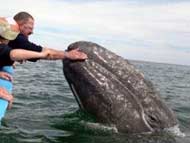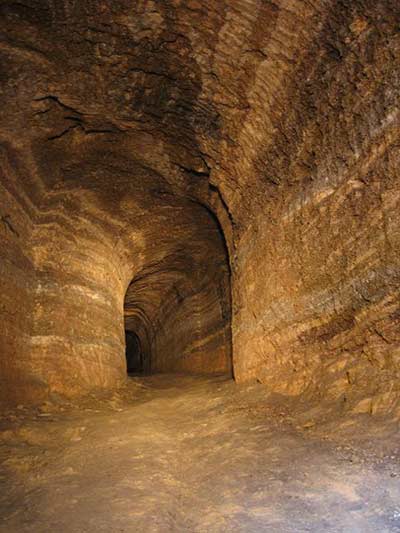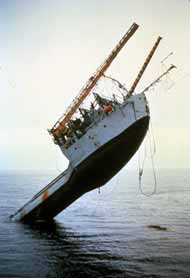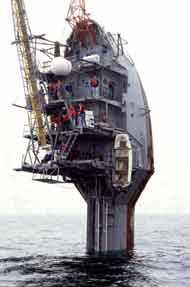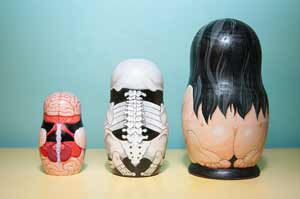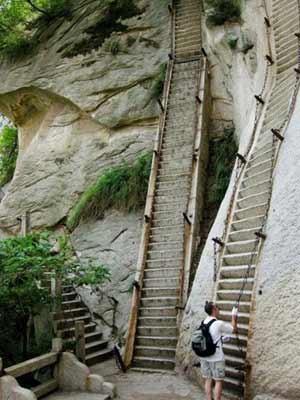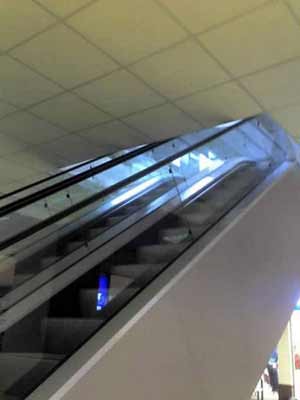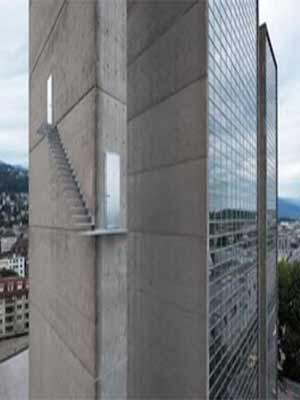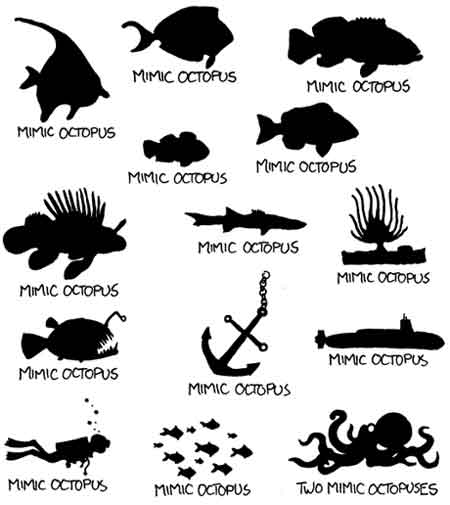Omniquantist (in case you wondered) is an example of a neologism — a newly-coined word.
When plunder becomes a way of life for a group of men living in society,
they create for themselves, in the course of time, a legal system that authorises it and a moral code that glorifies it.
Neology
Sept. 15, 2011
| Most Republican officeholders seem strangely uninterested in the effective repeal of Fourth Amendment protections by the Patriot Act, the weakening of habeas corpus and self-incrimination protections in the public hysteria following 9/11 or the unpalatable fact that the US has the largest incarcerated population of any country on Earth. If anything, they see imprisonment as a profit centre for the prison privatisation industry. A law passed in 2010 by the Arizona legislature mandated arrest and incarceration of suspected illegal aliens; it was drafted by a conservative business front group that drafts “model” legislation on behalf of corporate sponsors and this legislation was written for the private prison lobby, which sensed a growth opportunity in locking up still more people. In the modern GOP; it hardly seems conceivable that a Republican could have written the following: “Should any political party attempt to abolish social security, unemployment insurance and eliminate labour laws and farm programmes, you would not hear of that party again in our political history. There is a tiny splinter group, of course, that believes you can do these things. Among them are H L Hunt (you possibly know his background), a few other Texas oil millionaires and an occasional politician or businessman from other areas. Their number is negligible and they are stupid.” (That was President Eisenhower, writing to his brother Edgar in 1954.) The Dems’ new slogan should be: “I liked Ike.” Via Wickersham’s Conscience. |
||
| “What happened after 9/11 — and I think even people on the right know this, whether they admit it or not — was deeply shameful. The atrocity should have been a unifying event, but instead it became a wedge issue. Fake heroes like Bernie Kerik, Rudy Giuliani, and, yes, George W Bush raced to cash in on the horror. And then the attack was used to justify an unrelated war the neocons wanted to fight, for all the wrong reasons. A lot of people behaved badly. How many of our professional pundits — people who should have understood very well what was happening — took the easy way out, turning a blind eye to the corruption and lending their support to the hijacking of the atrocity? The memory of 9/11 has been irrevocably poisoned; it has become an occasion for shame. And in its heart, the nation knows it.” — Paul Krugman |
||
| “In our world, politics determines who has the power, not who has the truth. This leads to an economic system where for most, economic growth is a spectator sport. The solution to this injustice will come through democracy, civil liberties, and the rule of law to create a relatively equal society, supported by institutions that limit extremes of wealth and poverty. Ultimately, our world will become a better place when more of us try to create the society we would want if we didn’t know in advance who we’d be.” — Paul Krugman |
||
| In 2003, a Gulfstream aircraft carrying 6 passengers took off from Dulles International Airport and flew to Bangkok, fueling in Cold Bay, Alaska, and Osaka, Japan. Before it returned 4 days later, the plane touched down in Afghanistan, Sri Lanka, the United Arab Emirates and Ireland. As these unusual flights happened, US officials took custody of Indonesian terrorist Riduan Isamuddin, captured in Thailand. He’ll spend the next 3 years shuttling among secret CIA-operated prisons. The itinerary, as well as the $339,228.05 price tag for the journey, are among details of shadowy CIA flights that emerged in a small Upstate New York courthouse in a billing dispute between contractors. Court documents offer a rare glimpse of costs and operations of the controversial rendition programme. When their aviation company was sued by one of its suppliers, “secret” records suddenly showed up in public court documents — logs that show multiple calls to CIA headquarters; to the cell- and home phones of a senior CIA official involved in the rendition programme; to government contractor Falls-Church-based DynCorp, who worked for the CIA. Attorneys for a London-based legal charity, Reprieve (which has been investigating the CIA programme) discovered the Columbia County case and brought court records to the attention of The Washington Post, the Associated Press and a British newspaper, the Guardian. |
||
| “Fear is blinding, hateful, and vengeful. It makes the end justify the means. And why not? If torture can stop the next terrorist attack, the next suicide bomber, then what’s wrong with a little waterboarding or electric shock? The simple answer is the rule of law. Our Constitution defines the rules that guide our nation. It was drafted by those who looked around the world of the 18th century and saw persecution, torture, and other crimes against humanity and believed that America could be better than that. This new nation would recognise that every individual has an inherent right to personal dignity, to justice, to freedom from cruel and unusual punishment. We have preached these values to the world. We have made clear that there are certain lines Americans will not cross because we respect the dignity of every human being. That pledge was written into the oath of office given to every president, 'to preserve, protect, and defend the Constitution.’ It’s what is supposed to make our leaders different from every tyrant, dictator, or despot. We are sworn to govern by the rule of law, not by brute force. We cannot simply suspend these beliefs in the name of national security.” — Leon Panetta, former US CIA Director, now their Secretary of Defense, in the January/February/March 2008 issue of Washington Monthly |
||
Showdown
Prosecutors say Jeffrey Sterling of O’Fallon, Missouri was a key source of classified leaks for reporter James Risen’s 2006 book State of War. The book includes a chapter detailing an apparently botched CIA effort to sabotage Iran’s nuclear programme by supplying flawed blueprints through a Russian intermediary. Sterling served on the Iranian desk at the CIA and handled Iranian spies who defected. Some secrecy is normal and expected where classified information might be disclosed. The Classified Information Procedures Act, governs the process for deciding how to balance a defendant’s right to see the evidence against him and the government’s right to protect its secrets. But in the Sterling case, defense lawyers argue that prosecutors’ demands for secrecy and restrictions on the disclosure of classified information go far beyond established precedent and would prejudice Sterling’s right to a fair trial. In particular, they object to the “silent witness” rule, which allows jurors to see sensitive information that will never be made public and might require closing the courtroom to the public or allowing witnesses to testify behind a screen without revealing their identity. Edward MacMahon, Sterling’s lawyer, said the awkward logistics of the silent witness rule “would unfairly suggest to the jury that the documents are so secret that counsel cannot talk about them, when their alleged status as national security information is one of the very issues of fact the jury needs to decide.” He argues that if the government is truly concerned about protecting secrets, it should leave classified evidence out of the case. But prosecutors say their requests for secrecy are valid and prevent the defendant from bullying them into dropping the case for fear of disclosing sensitive information. We shall see.
| This is surprisingly disturbing. It’s “designed to be a tool that parents can use to help teach children about the facts surrounding 9/11”. It shows scenes from 9/11 for children to colour in and telling the story of the attacks and the subsequent hunt for Osama bin Laden. “Children, the truth is, these terrorist acts were done by freedom-hating radical Islamic Muslim extremists. These crazy people hate the American way of life because we are FREE and our society is FREE.” The Council on American-Islamic Relations has condemned the book as “disgusting” saying that it characterises all Muslims as linked to extremism, terrorism and radicalism, which could lead children reading the book to believe that all Muslims are responsible for 9/11, and that followers of the Islamic faith are their enemies. From the comments: evetsb 31 August: “Since when would a Navy Seal enter the lair of a terrorist leader wearing an Indiana Jones bush-hat? On the other hand, I’m sure bin Laden’s bedroom does look like a page from an Ikea catalogue.” |
||
| A single factor that seems to trigger riots around the world — the price of food. When food prices rise above a certain threshold, social unrest sweeps the planet. The graph shows both the food price index and also riots around the world. When prices hit or exceed the threshold, trouble develops. High food prices themselves don’t necessarily trigger riots but do create conditions in which social unrest flourishes. This happened December 2010 in Tunisia, triggering a wave of social unrest still continuing. Two main factors have driven food price index increase: 1) traders speculating on the price of food (exacerbated recently by the deregulation of commodities markets and the removal of trading limits) and 2) conversion of corn into ethanol (a practice directly encouraged by subsidies). If the model is correct and also if these trends continue, the index is likely to cross that threshold again by August 2013. When that happens, the world may be a tinderbox waiting for a match. |
||
About Libya
- Author William Blum’s take on Libya: “The Holy Triumvirate — The United States, NATO and the European Union — recognises no higher power and believes, literally, that it can do whatever it wants in the world, to whomever it wants, for as long as it wants, and call it whatever it wants, like “humanitarian”. If The Holy Triumvirate decides that it doesn’t want to overthrow the government in Syria or in Egypt or Tunisia or Bahrain or Saudi Arabia or Yemen or Jordan, no matter how cruel, oppressive, or religiously intolerant those governments are with their people, no matter how much they impoverish and torture their people, no matter how many protesters they shoot dead in their Freedom Square, the Triumvirate will simply not overthrow them. If the Triumvirate decides that it wants to overthrow the government of Libya, though that government is secular and has used its oil wealth for the benefit of the people of Libya and Africa perhaps more than any government in all of Africa and the Middle East, but keeps insisting over the years on challenging the Triumvirate’s imperial ambitions in Africa and raising its demands on the Triumvirate’s oil companies, then the Triumvirate will simply overthrow the government of Libya.”
- Ismael Hossein-zadeh’s take on Libya: “In light of the brutal death and destruction wrought on Libya by the relentless US/NATO bombardment, the professed claims of 'humanitarian concerns’ as grounds for intervention can readily be dismissed. While oil is undoubtedly a concern, it falls short of a satisfactory explanation because major Western oil companies were already extensively involved in the Libyan oil industry. Indeed, since Gaddafi relented to the US/UK pressure in 1993 and established 'normal’ economic and diplomatic relations with these and other Western countries, major US and European oil companies struck quite lucrative deals with the National Oil Corporation of Libya. Gaddafi is guilty of insubordination to the proverbial godfather of the world: US imperialism and its allies, as well as of refusing to join US military alliances in the region. Until the war, Libya had the highest living standard in Africa. All Libyans were guaranteed a subsistence income, whether employed or not. Gaddafi also refused to join the US Africa Command (AFRICOM), designed to control valuable resources in Africa, safeguard trade and investment markets in the region, and contain or evict China from North Africa. When the US formed AFRICOM in 2007, some 49 countries signed on to the US military charter for Africa but one country refused: Libya. Libya played a leading role in “connecting the entire [African] continent by telephone, television, radio broadcasting and several other technological applications such as telemedicine and distance teaching.” [From the author’s name, I would guess he is of middle-eastern origin. From his choice of loaded words, it’s clear he has a very strong bias. Nevertheless, he does provide a different viewpoint from that of most mainstream media.]
- Libya is literally covered by the Sahara Desert. The only exception is the narrow 1,200 mile coastline bordering the Mediterranean Sea, where almost 80% of its population resides. Once part of the Roman province of New Africa, it was subsequently controlled by the Byzantine and Ottoman empires. In modern times it was occupied by the British and French, but since 1969, the country is led by the government of Colonel Muammar Qaddafi. Tripoli, the ancient capital city, was designed by the Romans, and remains one of the most exotic destinations on the planet. Temperatures in Libya are hot, especially in the desert regions (90% of the country) during the extended summer months. Sandstorms and windy conditions are very common, even along the Mediterranean. Coastal areas are cooler and humid in the fall and winter, but rain is infrequent throughout the country. There is growing indication that Libya’s Gaddafi-era intelligence service had a cozy relationship with western spy organisations including the CIA, who voluntarily provided information on Libyan dissidents to the regime in exchange for using Libya as a base for extraordinary renditions. Libya’s society became increasingly Islamic during Gaddafi’s rule. His “purification laws” of 1994 punish theft by the amputation of limbs and fornication and adultery by flogging. Homosexual relations are punishable by up to 5 years in jail. A Westerner in 2005 said Libya was “...a country without alcohol where the population abides by strict codes of male-female conduct that require both sexes to stay virgins until marriage. I go in search of the town hotspot and discover it to be the local internet café, where crowds of young men play video games, enter English-language chat rooms, and surreptitiously view Western porn sites. There’s not a single woman in the place — away from the large progressive cities, women stay largely in the home, out of sight.”
| The ridiculous toll exacted by Richard Reid’s failed shoe-bomb attempt? Let’s say it takes an average of one minute to remove and replace your shoes in the airport security line. In the US alone, this procedure happens roughly 560 million times per year; 560 million minutes equals more than 1,065 years — which, divided by 77.8 years (the average US life expectancy at birth), yields a total of nearly 14 person-lives. So even though Richard Reid failed to kill a single person, he levied a tax that is the time-equivalent of 14 lives per year. |
||
| Anders Behring Breivik has confessed to carrying out the largest mass murder in Norway’s history. Nothing can be done to bring his victims back to life. The most compelling case for vengeance is that it offers some consolation to those wracked by desolation and fury at the murder of their loved one. But the point of a criminal justice system in a civilised society is not the mental peace of those collaterally wounded by crime. All evidence supports the proposition that Norway’s criminal justice system is both practically and morally superior to America’s. If America’s abominably cruel and unjust system delivered results even remotely comparable to Norway’s enviable level of civil peace and order, then there might be some reason to take seriously American animadversions against Norway’s short sentences and humane prisons. But it doesn’t — not even close. So Americans should just shut up and watch. It could do good to see how a civilised society handles a horrifying crime. The aim of its incarceration style is to avoid recidivism. The dehumanising experience of doing time in a US prison is partly blamed for America’s unusually high recidivism rate — over 60% are re-arrested within 3 years. Norway’s recidivism rate is roughly 20%. |
||
Seeing What You Believe
Every year, more than 75,000 eyewitnesses identify suspects in criminal investigations — and they’re wrong about 1/3 of the time. Mistaken identifications lead to wrongful convictions. Of the first 250 DNA exonerations, 190 involved mistaken eyewitnesses — many of whom were certain. “There is absolutely no question in my mind,” said one. Another was “120%” sure. A 3rd said, “That is one face I will never forget.” A 4th allowed for a glimmer of doubt: “This is the man, or it’s his twin brother.” It is perilous to base a conviction on a witness’s identification of a stranger. Memory is not videotape; it’s fragile at best, worse under stress, and subject to distortion and contamination. The unreliability of eyewitness identification is matched by its power. Research shows that juries tend to “over believe” eyewitness testimony. A special master appointed by the New Jersey Supreme Court last year concluded that memory should be treated “as a form of trace evidence: a fragment collected at the scene of a crime, like a fingerprint or blood smear, whose integrity and reliability need to be continually monitored and assessed.” Double-blind administration of lineups, photo arrays and the like, in which neither the person conducting the exercise nor the witness knows the “correct” answer would help. So would telling the witness that the suspect may not be present in the lineup or photo array at all.
| Three men doing time in Israeli prisons appeared before their 3-man parole board headed by a judge. The prisoners had all completed 2/3 of their sentences; the parole board granted freedom to only one.
The pattern of the board’s decisions wasn’t related to prisoners’ ethnic backgrounds, crimes or sentences. It was all about timing. Judges approved parole in 1/3 of the cases but the probability fluctuated wildly throughout the day. Prisoners appearing early in the morning received parole 70% of the time; those appearing late in the day were paroled < 10% of the time. The odds favoured the prisoner who appeared at 8:50am — and he did in fact receive parole. The other Arab Israeli prisoner was serving the same sentence for the same crime — fraud — but odds were against him when he appeared (on a different day) at 4:25pm. He was denied parole, as was the Jewish Israeli prisoner at 3:10pm (whose sentence was shorter than that of the man released). By afternoon, decision fatigue sets in. Car dealerships know this well. Car buyers must choose among styles of gearshift knobs, wheel rims, configurations of engine and gearbox and a palette of 56 colours. At first, customers carefully weigh choices, but soon start settling for whatever the default option is. With so many colours to choose from (all costing the same) having a buyer make that decision first depletes him or her so that acquiescence to later “default” choices can add more than $2,000 to the cost of the car. |
||
| Like that of many of the other “bog people” discovered in the peat bogs of Northern Europe, these remains were uncovered in 1950 by villagers in the town of Tollund, Denmark, who were gathering peat for fuel. Initially his remarkable state of preservation led the villagers to believe they were viewing a recent murder victim and after much debate, the local police were called to investigate. Puzzled by the appearance of the remains, the police asked a scientist to view the discovery. Like all the "bog people," Tollund Man showed signs of a violent death. Nude but for a leather cap and wide belt around his waist, the body was discovered with a rope tightly wound around his neck. Later research was to reveal that he had been hanged in what is now commonly thought to be ritual sacrifice. He lived during the 4th century BCE (Before the Christian Era, a secular alternative to BC — Before Christ), a period characterised in Scandinavia as the Pre-Roman Iron Age. The acid in the peat and the lack of oxygen below the surface, had preserved the soft tissues of his body. Scientists discovered the man’s last meal had been a kind of porridge made from vegetables and seeds, both cultivated and wild. Restored, he now resides at the Silkeborg Museum in Denmark. |
The Tunnel Cohanim
- The Cohanim are considered to be direct descendants of one man — Aaron, the brother of Moses. Cohanim (plural of Cohen) are the priestly family of the Jewish people, members of the Tribe of Levi. The books of Exodus and Leviticus describe the responsibilities of the Cohanim, which include the Temple service and blessing of the people. The Torah (the first 5 books of the Bible) describes the anointing of Aaron, the brother of Moses, as the first High Priest (Cohen Gadol).
- This green tunnel is located in Rivne, a historic city in western Ukraine. In 1939, as a result of the Molotov-Ribbentrop Pact and the partition of Poland, the area was occupied by the Soviet Union. From December of that same year, Rivne became the centre of the newly established Rivne Oblast (province). In June 1941, Rivne was captured by Nazi Germany, who established the city as the administrative centre of the Ukraine. At the time, roughly a half of Rivne’s inhabitants were Jewish; of these, about 23,000 were taken to a pine grove in Sosenki and killed between the 6th and the 8th of November. A ghetto was established for the remaining 5,000 Jews. In July 1942, these were sent some 70 kilometres north to Kostopil where they were killed and the ghetto liquidated. On 2 February 1944, the city was liberated by the Red Army and remained part of Soviet Ukraine until the break-up of the Soviet Union in 1991.
- In 1997, 188 Jewish males were asked to contribute some cheek cells from which their DNA was extracted for study. Participants from Israel, England and North America were asked to identify whether they were a Cohen, Levi or Israelite, and to identify their family background. The results of the analysis of the Y chromosome markers of the Cohanim and non-Cohanim were indeed significant. A particular marker, (YAP-) was detected in 98.5% of the Cohanim but in a significantly lower percentage of non-Cohanim. A particular array of 6 chromosomal markers was found in 97 of the 106 Cohens tested. This collection of markers has come to be known as the Cohen Modal Hapoltype (CMH), the standard genetic signature of the Jewish priestly family. The finding of a common set of genetic markers in both Ashkenazi and Sephardi Cohanim worldwide indicates an origin pre-dating the separate development of the two communities around 1000 CE (Common, Current, or Christian ERA). The date calculation is based on the computed rate of the mutation, yielding a time frame of 106 generations from the ancestral founder of the line, some 3,300 years. This would be the approximate time of the Exodus from Egypt, possibly even during the lifetime of Aaron, brother of Moses. Calculations based on the high rate of genetic similarity of today’s Cohanim result in the highest “paternity-certainty” rate ever recorded in population genetics studies — a scientific testimony to family faithfulness.
| In 2000, 40-year-old Alex’s sexual preferences suddenly began to transform. He developed an interest in child pornography — not just a little interest, but an overwhelming one. He poured his time into child-pornography Websites and magazines; he solicited prostitution at a massage parlour. He reported later that he’d wanted to stop, but couldn’t. He worked to hide his acts, but subtle sexual advances toward his prepubescent stepdaughter alarmed his wife, who discovered his collection of child pornography. He was removed from his house, found guilty of child molestation, and sentenced to rehabilitation. There, he made inappropriate sexual advances toward staff and other clients, was expelled, and routed toward prison. At the same time, Alex complained of worsening headaches. The night before he left for prison, he visited the emergency room and underwent a brain scan, which revealed a massive tumour. Neurosurgeons removed the tumour and Alex’s sexual appetite returned to normal. A year later, his pedophilic behaviour began to return. His doctor discovered that a portion of the tumour had been missed in surgery. Alex went back under the knife and his behaviour again returned to normal. Hidden drives and desires can lurk undetected behind the neural machinery of socialization. When the frontal lobes are compromised, people become disinhibited, and startling behaviours can emerge. Human behaviour cannot be separated from human biology. The more we learn, the more the seemingly simple concept of blameworthiness becomes complicated, and the more the foundations of our legal system are strained. |
||
| Why do some people survive drug and alcohol abuse, even manage their lives with it, while others succumb to addiction? Illicit drug use in the US, as in Britain, is very common and usually begins in adolescence. According to the 2008 National Survey of Drug Use and Health, 46% of Americans have tried an illicit drug at some point in their lives but only 8% used one in the past month. By comparison, 51% used alcohol in the past month. Most people don’t become addicted. Can we determine who will be at risk? The depressed and anxious turn to alcohol and other sedatives, though these are terrible antidepressants and worsen underlying problems. This leads to a downward spiral. Certain personality disorders also raise the odds of abuse — narcissistic patients constantly battle feelings of inadequacy, so are frequently drawn to stimulants like cocaine that provide a fleeting sense of power and self-confidence. People with borderline personality disorder struggle to control their impulses and anger, so often resort to drugs and alcohol to soften intolerable moods. People addicted to cocaine, heroin and alcohol have fewer dopamine receptors in the brain’s reward pathways than nonaddicts so drug addicts may have blunted reward systems in their brains — for them, everyday pleasures just can’t come close to the powerful reward of drugs. |
||
Better Blends
In anatomy, heterochromia refers to a difference in colouration, usually of the iris but also of hair or skin. Heterochromia is a result of the relative excess of (or lack of) melanin, a pigment. The condition may be inherited, or it may be caused by genetic mosaicism (fused eggs developing into a single foetus), disease, or injury. Central heterochromia is an eye condition where there are two colours in the same iris; the inner iris is a different colour than the outer. The outer ring of an eye affected by central heterochromia is considered that iris’s true colour.
- The first pair of eyes exhibit complete heterchromia. It’s hard to tell due to reflection on the eye on the far left, but that eye appears to exhibit its own partial heterchromia — it looks blue on the top and brown on the bottom.
- Partial heterchromia iridis.
- Lipochrome, an amber centring.
- Complete heterochromia in a Hispanic woman: one brown and one hazel. Note the odd star pattern in the eye on the far right.
| This has been going around as a “half-albino” peacock, but it’s really a cross between an Indian blue peafowl and its white genetic variant. It ended up oddly heterochromic. |
||
| One of the better features of France’s civil law system is that it places a premium on defining things precisely. Thus one of the best definitions of “theft” is found in the French Penal Code: the fraudulent subtraction of another person’s property. The word “subtraction” is key. To steal something is to fraudulently subtract from another’s property. With file sharing, of course, no subtraction occurs, since the file is copied. And under French law, illegal file sharing instead falls under the rubric of counterfeiting. If you create a false document, you are not stealing anything from anyone, but you are fraudulently impinging on legal rights. Via Andrew Sullivan / The Daily Beast. According to the Japanese Research Institute of Economy, Trade and Industry (RIETI), file sharing has a positive effect on sales, but a negative effect on rentals. |
||
This comic is drawn by Zack Weiner. This one is a “Who’s on First?” routine but for the periodic table?
| Some years hence you find yourself taking business trips to Mars via teleportation. A scanner records the states of your body in atomic detail and digitally encodes the information for radio transmission, destroying your body in the process. No worries — it’s reconstructed on Mars using locally available materials as soon as the radio signals are decoded. The replication is perfect: identical body, brain, memory stores and patterns of mental activity. It is “you” — you’re certain. Most neuroscientists say they would readily submit to this process. They know that the “self” is no more than a pattern of experiences and dispositions bundled together by the operations of the central nervous system. But wait! Today, the teleporter malfunctions. You’ve been scanned and transmitted, but this time you didn’t vapourise as usual. Your replica was automatically constructed and goes about its business. But “you” are still here. Worse, the faulty scanner left you with a fatal heart condition — you’ll be dead within days. Which would you rather be, the Martian replica or the moribund earthbound version? It should make no difference — in scenario two, the vapourisation process has been delayed, that’s all. The personal trajectory of the individual arriving on Mars is the same for both scenarios. Psychological continuity has been maintained. But very few rest easy with scenario two. It shatters one’s complacency: “The replica’s not me now.” (But see — maybe if you HAD been vapourised, it wouldn’t have been you either — only IT would think it had always been you, though YOU would now be dead.) I read something very like this about cloning — your clone may seem to others (and even to itself) to still be you — if it’s loaded with your brain, memory stores, and patterns of mental activity. But I wouldn’t bet it IS you — especially if the procedure kills you (or if the clone kills you so that it can take your place). |
||
| Akrasia (“lacking command over oneself”) is the state of acting against one’s better judgement. The adjective form is “akratic”. The problem goes back at least as far as Plato. Socrates, in Plato’s Protagoras, asks precisely how this is possible — if one judges action A to be the best course of action, why would one do anything other than A? Socrates attests that akrasia is an illogical moral concept, claiming, “No one goes willingly toward the bad.” If a person examines a situation, he decides to act in the way he determines to be best. A person, according to Socrates, never chooses to act poorly or against his better judgement; actions that go against what is best are only a product of being ignorant of facts or knowledge of what is best. Aristotle, on the other hand, took a more empirical approach to the question. He reasons that akrasia occurs as a result of opinion instead of reason. When people act in this way, they temporarily believe that the worse course of action is better, because they have not made an all-things-considered judgement, but only one based on a subset of possibilities. Another explanation is that there are different forms of motivation which can conflict with each other. Throughout the ages, many have identified a conflict between reason and emotion, which might make it possible to believe that one should do A rather than B, but still end up wanting to do B more than A. We make different judgements close to a reward than we will when we’re further out from it. |
||
Where Hurricanes Go
Some years are worse than others, but if all the storms of the past century and a half were to hit at once, this is where they’d be. University of California at Berkeley physics grad student Robert Rohde used all available data from government sources to map 150 years’ worth of hurricane tracks through September 2005.
- Out of place? — In 2004, Catarina went down in history as the only recorded category 2 hurricane in the region.
- California whorls — Cold ocean water moves from north to south along the West Coast, cooling the coastal Pacific and removing the threat of hurricanes, which need warm ocean water.
- Everyone out of the pool! — Warm waters and quick currents come together to form the Western Pacific Warm Pool, a breeding ground for violent cyclones.
- Why the equator is calm — All the tropical storm tracks move away from the equator.
- At least someone’s happy — Monsoon rains offer a seasonal break from sweltering summer temperatures and irrigate growing crops.
- The biggest and baddest — Katrina, which hit in August 2005, was the costliest hurricane in history, racking up more than $80 billion in damages. The strongest Atlantic hurricane on record was Camille, which hit Mississippi moving at 190 miles per hour in 1969.
| Pie de Amigo (Foot of a Friend) by Miler Lagos. An arc of stacked architecture books have one pencil placed in the leaves of each book that, if removed, will cause the whole piece to tumble. |
||
| More than 1 in 4 US bridges are either structurally deficient or functionally obsolete, according to a 2009 estimate by the US Society of Civil Engineers. 72,000+ US bridges are listed by the US Department of Transportation as requiring extra surveillance. 79,000 others are functionally obsolete, exceeding their life-span and carrying loads greater than they were designed to handle. But University of Maryland electrical engineering researcher Mehdi Kalantari has developed a new, affordable early warning system — tiny wireless sensors that monitor and transmit minute-by-minute data on a bridge’s structural integrity — strain, vibration, flexibility, tilt, acceleration, deformation and development of metal cracks. A central computer analyses the data and instantly warns officials of possible trouble. Sensors are expected to last more than a decade, with each costing about $20. An average-sized highway bridge would need about 500 sensors for a total cost of about $10,000. Newer “smart” bridges have embedded networks of sensors wired together. But Kalantari estimates retrofitting a wired network will cost 100 times more than a wireless network. Current federal requirements call for onsite visual inspection of highway bridges once every 2-5 years depending the span’s condition, but bridges deemed structurally deficient must be inspected once each year. |
||
- You’ve likely seen this picture already but it’s worth a second look (courtesy of the Cassini-Huygens spacecraft). If you look carefully, you can see planet Earth to the left, nestling just above the bright rings. The night side of Saturn is seen to be partly lit by light reflected from its own ring system. The rings themselves appear dark when silhouetted against Saturn, but quite bright when viewed here, slightly scattering sunlight. Cassini also discovered 7 new moons in orbit around Saturn, bringing the total number to 62. The original rings were 10 to 100 times larger than they are now, but over time the ice in the outer rings has coalesced into some of Saturn’s tiny inner moons.
- The amount of space junk orbiting Earth has reached a “tipping point” where continual collisions are thickening the already dense cloud shrouding us, a NASA report has revealed. In practical terms, it means that the amount of junk floating around the planet will make it increasingly difficult for spacecraft to leave, effectively trapping us on Earth. It also poses “potentially catastrophic risk” to astronauts, satellites, and the International Space Station. There are 22,000 objects in orbit that are big enough for officials on the ground to track and countless more smaller ones that could do damage to human-carrying spaceships and valuable satellites. It is estimated that there are as may as 370,000 pieces of space junk floating in Earth’s orbit, travelling at speeds of up to 22,000 miles per hour. Several solutions to retrieving or moving the space junk were put forward in an earlier report called Catcher’s Mitt, by a Defense Department science think-tank. It mentions giant cosmic versions of harpoons, nets, tethers, magnets and even a giant dish or umbrella-shaped device that will sweep up tiny pieces of debris. A 2007 Chinese anti-satellite weapon test and a 2009 crash-in-orbit of two satellites have put so much new junk in space that the number of fragments in Earth orbit has now doubled in 5 years.
| The Majestic Plastic Bag is a mockumentary narrated by Academy-award-winning actor Jeremy irons, depicting the journey of this ordinary object to its final destination — the shameful Pacific garbage patch. In California, 19 billion bags are used annually, creating over 123,000 tons of unnecessary waste and costing taxpayers $25 million in cleanup costs per year. |
||
| Fracking is big business. Australian-based BHP Billiton paid $5 billion (NZ$6 billion) for fracking (aka “fraccing”) rights for a site in Arkansas earlier this year. But the drilling technique, which is used to stimulate the production of oil and natural gas, has copped much criticism in the US, Europe and Australia for its detrimental impacts on the environment. Now, there are concerns around its use in New Zealand. Today New Zealand Petroleum & Minerals, which manages the government’s oil, gas, mineral and coal resources, released a faq sheet claiming it’s not that bad at all. The fracking process has been around since 1821, when it was used to extract natural gas in New York. It works by injecting fluids underground at high pressures to fracture the formations, which allows oil and gas to flow more freely outward and upward. But the liquids used are often made up of hazardous carcinogenic materials toxic enough to contaminate underground water resources. The European Parliament’s Committee on Environment, Public Health and Food Safety commissioned a study which concluded that, since fracking injects toxic chemicals underground, it may restrict or exclude any later use of that now-contaminated layer. The wastewater is sometimes discarded in sewage plants and it is often much more radioactive than these plants were designed to handle. Drinking water supplies can be seriously impacted. The fracking of shale for oil and gas extraction is already occurring in Taranaki and it is being planned for areas throughout the country. This concerns some scientists. |
||
Why are some hills on Mars so layered? The answer is still under investigation. Clearly, dark windblown sand surrounds outcroppings of light sedimentary rock across the floor of crater Arabia Terra. The light rock clearly appears structured into many layers, the lowest of which is likely very old. Although the dark sand forms dunes, rippled dunes of lighter-coloured sand are easier to see surrounding the stepped mesas. Blown sand possibly erodes the once-larger mesas into these layered hills. Most of the layered shelves are wide enough to drive a truck around. The above image, showing an area about 3 kilometres across, was taken in October 2003 by the now-defunct Mars Global Surveyor spacecraft orbiting Mars.
| Contact between a snow crystal and supercooled water droplets results in the liquid droplets freezing onto the surface of the crystal. This is known as accretion. Crystals that exhibit frozen droplets on their surfaces are referred to as rimed. When this process continues so that the shape of the original snow crystal is no longer identifiable, the resulting crystal is referred to as graupel (a German word denoting this particular meteorological phenomenon). Graupel commonly forms in high-altitude climates and is both denser and more granular than ordinary snow due to its rimed exterior. Macroscopically, it resembles small beads of polystyrene. The combination of density and low viscosity makes fresh layers of graupel unstable on slopes, and layers of 20-30 centimetres present a high risk of dangerous slab avalanches. In addition, thinner layers of graupel falling at low temperatures can act as ball bearings below subsequent falls of more naturally stable snow, rendering them also liable to avalanche. (Oddly, as I was writing this, what I believe to be graupel began falling on us at Thaumaturgy Studios here in Wellington. At right is a photo that Wolf just took of the front balcony.) |
| Thundersnow, also known as a winter thunderstorm or a thunder snowstorm, is a relatively rare kind of thunderstorm with snow falling as the primary precipitation instead of rain. It typically occurs in regions of strong upward motion within the cold sector of an extratropical cyclone. Thermodynamically, it is not different from any other type of thunderstorms but the top of the cumulonimbus are usually quite low. One unique aspect of thundersnow is that the snowfall acts as an acoustic suppressor of the thunder. The thunder from a typical thunderstorm can be heard many miles away, while the thunder from thundersnow can usually only be heard within a 2-3 mile radius from the lightning. In the US, March is peak month for their formation. On average 6.3 events are reported per year. Last month, when Wellington experienced the first snow I’ve seen here, it was accompanied by thunder. I didn’t even recognise it at first — it sounded nothing like normal thunder. I thought it was something in my neighbourhood. So I had a brand new experience. Yay. |
||
Ephemeral Beauty
- Taken in 2003 probably in either Iowa or Nebraska, this was labelled Awesome weather for a reason.
- The Cargill corn milling plant in Blair, Nebraska in 2006.
- Arctic air combines with river steam and a corn milling plant’s steam to produce light pillars over Blair, Nebraska due to ice crystals floating in The air from the steam sources. A setting moon adds to the scene, creating a light pillar of its own.
- Mammatus off severe storms in northeast South Dakota, May 2010.
- Intense mammatus clouds form over eastern Nebraska August 2007 behind a line of storms. The lighting on this photo is lovely.
- All I could find about this was that this sky appeared after a hailstorm — but I have no idea where in the world it might have occurred.
- Intense, high precipitation supercell storm moves south in the Nebraska Sand Hills, July 2009. Low, long, fat inflow cloud stretches east of the storm. Winds gusted upwards of 60+ miles per. Tornado warning mentioned baseball-size hail and winds in excess of 100 miles per hour, a rare warning. As intense as the storm was, it produced only one short-lived small tornado. Traffic heading north on Highway 83 were driving right into the storm’s forward flank downdraft, which contained large hail and intense rain.
- Supercell storm spitting out lightning during twilight nears a York, Nebraska truck stop on I80 17 June 2009. Half an hour earlier, this storm produced a long-lived large tornado near Aurora, Nebraska.
- Extremely low-hanging shelf cloud created by a monster supercell off Yankton, South Dakota. (This supercell spawned a tornado as well.)
| Is it worthwhile for Icelanders to begin again to harvest whale on a commercial basis in light of the potential costs they could suffer? In addition to the direct benefits from additional export earnings and jobs, indirect benefits could arise from the interaction of commercial whaling and the size of whale stocks and associated impact on the size of fish stocks. Around a dozen species of whales are regarded as common around Iceland, meaning they number at least in the several thousands. The food consumption of this large number of large mammals is substantial and could grow larger still if whale stocks are left unchecked by commercial whaling. Some whales feed off krill while others eat capelin and/or cod. The interactions between various species of whales and commercially important fish stocks are exceedingly complex. Scientists at the Marine Research Institute have reported that, based on simulations using multi-species models, unrestrained whale stocks around Iceland could bring an up-to-10% decline in sustainable cod yields. But legitimate concerns have been raised about the impact the resumption of commercial whaling could have on Iceland’s image abroad. Quantifying this impact is difficult, but one can get a feel for the order of magnitude by looking at the economic significance of Iceland’s tourism sector. Around 200,000 foreigners visit Iceland annually, making it an important component of the Icelandic economy. Three countries (Germany and the United Kingdom in Europe and the United States) account for almost 1/2 of all foreign visitors and it so happens that opposition to whaling is particularly virulent in these countries. “Arguments based on the intelligence of whales do not appeal to people as before.” Oh? And why not? |
| Sugar drops with edible colours red, green, blue and yellow were placed in a garden to attract insects. By placing them on a paraffin base the drops kept their shape when touched by ants. Scientist Dr Mohamed Babu discovered the ants preferred lighter colours such as yellow and green. He said: “The idea for the photograph came to me after my wife showed me some ants that turned white sipping the spilled milk drops on our kitchen counter. I shot the photo in my garden to take advantage of natural lighting. As the ant’s abdomen is semi-transparent, ants gain colour as they sip the liquid.” |
||
Deep Subjects — Caves in the Ukraine
- Most of Odessa’s 19th century houses were built of sandstone mined nearby. This created a very complicated labyrinth of underground tunnels beneath Odessa, known as catacombs — an estimated 2,500 kilometres of labyrinths stretch out under the city and surrounding areas. Odessa’s catacombs are much younger than those in Paris or Rome, but extensively exceed either in length. Presently only 1,700 kilometres are being accessed. Their average height is 1.5–3.5 metres and width 2–4.5 metres; the depth reaches 50 metres below sea level. Because these Ukrainian catacombs span the entire city and more, Odessa has no subway system. Local criminals once used and broadened many tunnels, also used as refuge for slave traders smuggling stolen women to Odessa ports and on to the slave markets of Constantinople. Later, during World War II, catacombs housed thousands of partisan rebels. There are no forests or hills around Odessa; during war the only place Ukrainian partisan rebels could hide was underground in the catacombs. These they used as a base for attacking occupying Nazi troops. Up to 6,000 people lived and operated from underground.
- Deep below the surface of the former Soviet republic of Ukraine, starkly lit salt mine tunnels wend their way through a crust of underground mineral deposits. The air in these seemingly interminable subterranean passageways is replete with the salt particles once mined by workers. One might think air in such a place would be harsh on the lungs of those miners, fresh air commonly being considered the preserve of outdoor spaces. Not so. Ukraine’s repurposed Solotvyno salt mine appears to have remarkable curative properties. This underground facility is situated near the small Ukrainian village of the same name, close to the Romanian border. It opened during Soviet times in the 1970s, and still operates alongside the Ukrainian State Allergy Hospital located nearby. The therapy is based on a method known as Speleotherapy, an alternative therapy for asthma and other respiratory diseases discovered in Poland in the 1950s when it was noticed that salt mine workers rarely suffered from tuberculosis. Scientists found that the salt-permeated air of the working salt mine helped to dissolve phlegm in the bronchial tubes and also killed the micro-organisms which cause infections – and that this also greatly helped patients who were undertaking treatment for asthma. The tunnels are 300 metres below ground level and remain at a steady 22°C (72°F) year-round. About 3,000 people are treated here annually; there is often a waiting list. At any given time up to 200 people are receiving therapy. Patients spend an average of 24 days at the facility.
| Commonly referred to as the FLIP (FLoating Instrument Platform) ship, it is a 355-foot-long, spoon-shaped buoy (no engine) which can be flipped from a horizontal to a vertical position by pumping seawater into the “handle” end while flooding air into the “cradle”, causing it to rise up out of the sea. The long, thin end of the buoy has special ballast tanks to hold seawater. Once the 28-minute transformation from horizontal to vertical has taken place, the protruding end is equivalent in height to a 5-story building and 300 metres of the buoy are submerged underwater, keeping the 700 long-ton mass steady. This is perfect for researching wave height, acoustic signals, water temperature / density, and collecting meteorological data. It has 3 anchors or can just drift freely; it copes with swells up to 80 feet and is so stable it’s almost unaffected by vertical wave motion. Most rooms on FLIP have 2 doors, one to use when horizontal, the other when vertical. Bunk beds, toilets and stoves are built on swivels and gimbals; they turn along with the buoy, but things that wouldn’t rotate so well, like sinks, are built both horizontally and vertically in each room. FLIP currently resides in La Jolla, California, although it operates all over the world. The buoy has so far completed over 300 operations. There are two heads aboard (bathrooms), but one can only be used in the horizontal position and one only in the vertical. Onboard, 16 researchers live in austere, cramped (but stable!) conditions for 30-45 days. |
|
This content requires Javascript and Adobe Flash Player. |
I suppose this was funny to me because it was so unexpected — dogs don’t usually misjudge by such a wide margin — but he looks young. From Fail. |
|
Looking Deeper
- Anatomical Nesting Dolls for a show at the Rothick Art Haus.
- The comments on these dolls were interesting. Some people (the religious ones) thought there should be a 4th inner ghost doll (presumably representing the soul). Others thought the 4th inner doll should show the contents of the stomach.
- I’d probably go with the idea that 3 is sufficient. It’s just representing an idea, after all. It isn’t meant as a teaching tool.
| The komondor (a Hungarian word, the plural of which is komondorok) is a large white Hungarian breed of livestock guardian dog with a long, corded coat. It is sometimes referred to as a mop dog. The komondor has a natural guardian instinct for livestock and other property. The breed was mentioned for the first time in 1544 in a Hungarian codex. It has been declared one of Hungary’s national treasures, to be preserved and protected. The dogs have robust bodies and are strongly muscled, with long legs and a short back. The coat is the heaviest amount of fur in the canine world, resembling dreadlocks or a mop. The puppy coat is soft and fluffy but wavy, tending to curl as the puppy matures. A fully mature coat is formed naturally from the soft undercoat and the coarser outer coat combining into tassels or cords. This will take around two years to form and some help is needed in separating the cords so the dog doesn’t turn into a matted mess. The length of the cords increases with time as the coat grows. Shedding is minimal once cords are fully formed. Traditionally the coat protects them from wolves’ bites. The dog is vigilant; though resting in the daytime, it still keeps an eye on the surroundings. At night, however, it constantly moves, patrolling the place, up, down, and around the whole area. Many Komondors are “late bloomers,” not fully mature until nearly 3 years of age. Via Tywkiwdbi. |
||
| Alpaca (Vicugna pacos) is a domesticated species of South American camelid. It resembles a small llama in appearance. Alpacas are kept in herds that graze on the level heights of the Andes of southern Peru, northern Bolivia, Ecuador, and northern Chile. They have soft pads, not hoofs. Alpacas are considerably smaller than llamas, and unlike llamas, were not bred to be beasts of burden but specifically for their fibre. Alpaca wool, which is soft and fine, is used for making knitted and woven items. Alpacas do spit — usually at each other, but sometimes at humans, so be careful around them. Alpacas create "latrines", a few selected small areas that the herd uses for defaecation and urination. This results in very clean paddocks. This alpaca lives at the Awana Kancha llama “sanctuary” between Cuzco and Pisac, Peru. |
||
Suspended Stairs
- This mountain is one of China’s 5 sacred Taoist mountains and coincidentally, has 5 main peaks. Called Hua Shan or Mt Hua, it is reported that up to 100 deaths per year occur on this trail. (Not too tourist friendly.) That’s an average of one death every 3 days — a bit like playing Russian roulettte. The faint-of-heart can take a cable car. If you do it the hard way and live, I think it’s considered an achievement spiritually.
- No information on where this is to be found. One would presume it has been fixed by now, though it’s difficult to understand how it got built in the first place. Possibly photographed by Avi Abrams from Calgary, Canada, 2007 — but he apparently travels a lot and sometimes appropriates photos, so it could be from anywhere, by anyone.
- While these stairs truly are attached to the exterior concrete wall of this towering Swiss skyscraper over 10 stories off the ground, they are not actually used by anyone – instead, they’re the work of conceptual artists and architects (and now spectacular staircase designers) Sabina Lang and Daniel Baumann.
| The Washburn Crosby Company of Minneapolis, one of the 6 big milling companies that merged into General Mills in 1928, received thousands of requests each year in the late 1910s and early 1920s for answers to baking questions. In 1921, managers decided that it would be more intimate to sign the responses personally; they combined the last name of a retired company executive, William Crocker, with the first name “Betty,” which was thought of as “warm and friendly.” The signature came from a secretary, who won a contest among female employees. (The same signature still appears on Betty Crocker products.) In 1924, Betty Crocker acquired a voice with the radio debut of the nation’s first cooking show, which featured 13 different actresses working from radio stations across the country. Later it became a national broadcast, The Betty Crocker School of the Air, which ran for 24 years. Finally, in 1936, Betty Crocker got a face. Artist Neysa McMein brought together all the women in the company’s Home Service Department and “blended their features into an official likeness.” The widely circulated portrait reinforced the popular belief that Betty Crocker was a real woman. One public opinion poll rated her as the second most famous woman in America after Eleanor Roosevelt. [I find this rather sad.] A Betty Crocker commercial from the 1950s. |
| She may be beautiful today, but what will she look like in 20 years? 30? Try 70. What might she look like 70 years later? (By the way, the woman in the right and Supergrandma Mamika are one and the same.) |
Modern Cinderella story: Prince William and Catherine
It’s rather remarkable that the colour of the dresses of Princesses Beatrice and Eugenie matched Disney’s vision of a royal wedding.
| You may think you don’t like ballet — but you’ll perhaps still be impressed by this performance — the lead ballerina dances not with her partner so much as on him. The muscular control in evidence here is truly impressive. |
| A well-placed clip can immobalise your cat — called pinch-induced behavioural inhibition (“clipnosis”). Via Tywkiwdbi. (I think clipnosis probably counts as a neologism.) |
||
Snub-Nosed Monkeys
Among the most endangered primate species in Asia, they have been hunted for centuries for pelts and for body parts used in Chinese medicine. The Manchu valued their pelage (coat) which was believed to ward off rheumatism. There are only a few hundred or a few thousand left of each species. They spend most of their time in trees but come to ground for some feeding and social activities. If threatened, they can race through upper levels of the canopy at great speeds. They are able to survive in cold temperatures better than any other primate. They live in areas covered in snow as much as half of the year, enduring sub-zero winters.
- The Yunnan snub-nose monkey has predominately black shoulders. It lives in temperate mountain forests from 3,000 to 4,000 metres. The fur for these monkeys was once so highly valued that only the highest officials were allowed to wear it.
- The golden snub-nosed monkey is one of 5 related species whose ranges were squeezed by climate change after the last ice age. Their scientific name, Rhinopithecus roxellana, was allegedly inspired by the snub-nosed concubine of a 1500s sultan. About 20,000 of the golden variety remain. Some 4,000 inhabit the Qin Ling Mountains of central China. Deep snow and bitterly cold temperatures in winter are common throughout their habitat. To stay warm they huddle together on tree branches. Why the odd face? Perhaps the flat muzzle evolved to combat extreme cold, which would cause frostbite to bare, exposed, fleshy noses.
- The blue-faced snub nosed monkey is one of the most artistically colourful monkeys around. These Old World monkeys live primarily off lichen. Unfortunately loggers in China remove the dead trees that produce the tastiest and most abundant lichens, steadily destroying this beautiful primate’s habitat.
|
This content requires Javascript and Adobe Flash Player. |
“I can do it!” Did this dog misjudge, or did she know it would be tight, but she (I hope, based on where scrapes occur) knew it was possible? ICanDoIt from IHasAHotDog. |
|
|
This content requires Javascript and Adobe Flash Player. |
The Common Caribbean Octopus, Octopus vulgaris, has a camouflage change. This clip was shot by Roger Hanlon at Marine Biological Laboratory, Woods Hole, Massachusetts. O. vulgaris is the only non-vertebrate animal protected by the Animals (Scientific Procedures) Act 1986 in the UK; they were included due to their high intelligence. Tiny pigment sacs called chromatophores with up to 5 colours lie beneath their skin. Rings of muscle control the release of pigment to match the terrain an octopus covers, or when it decides it must blend in with the background to fool predators. Octopuses can learn new tasks even as adults. The learning power of an octopus is only restricted by its short life span, which ranges from 6 months to a few years. They often manipulate their environment in ways that suggest playing in addition to regular life tasks. In captivity, they play with toys such a Rubik’s cube. One octopus, Louis, became attached to a Mr Potato Head. Some octopus species are stranger than others. The blue-ringed octopus carries enough venom to kill 10 people. The deep-sea finned octopus glows with a blue-green light. The original MovFile. And an even larger version is part of David Gallo’s TED talk. |
|
An accountant visited the Natural History museum. While standing near the dinosaur he said to his neighbour: “This dinosaur is 2 billion years and 10 months old.”
“Where did you get this exact information?”
“I was here 10 months ago, and the guide told me that the dinosaur was 2 billion years old.”
 Animals
Animals Animation
Animation Art of Playing Cards
Art of Playing Cards Drugs
Drugs Education
Education Environment
Environment Flying
Flying History
History Humour
Humour Immigration
Immigration Info/Tech
Info/Tech Intellectual/Entertaining
Intellectual/Entertaining Lifestyles
Lifestyles Men
Men Money/Politics/Law
Money/Politics/Law New Jersey
New Jersey Odds and Oddities
Odds and Oddities Older & Under
Older & Under Photography
Photography Prisons
Prisons Relationships
Relationships Science
Science Social/Cultural
Social/Cultural Terrorism
Terrorism Wellington
Wellington Working
Working Zero Return Investment
Zero Return Investment